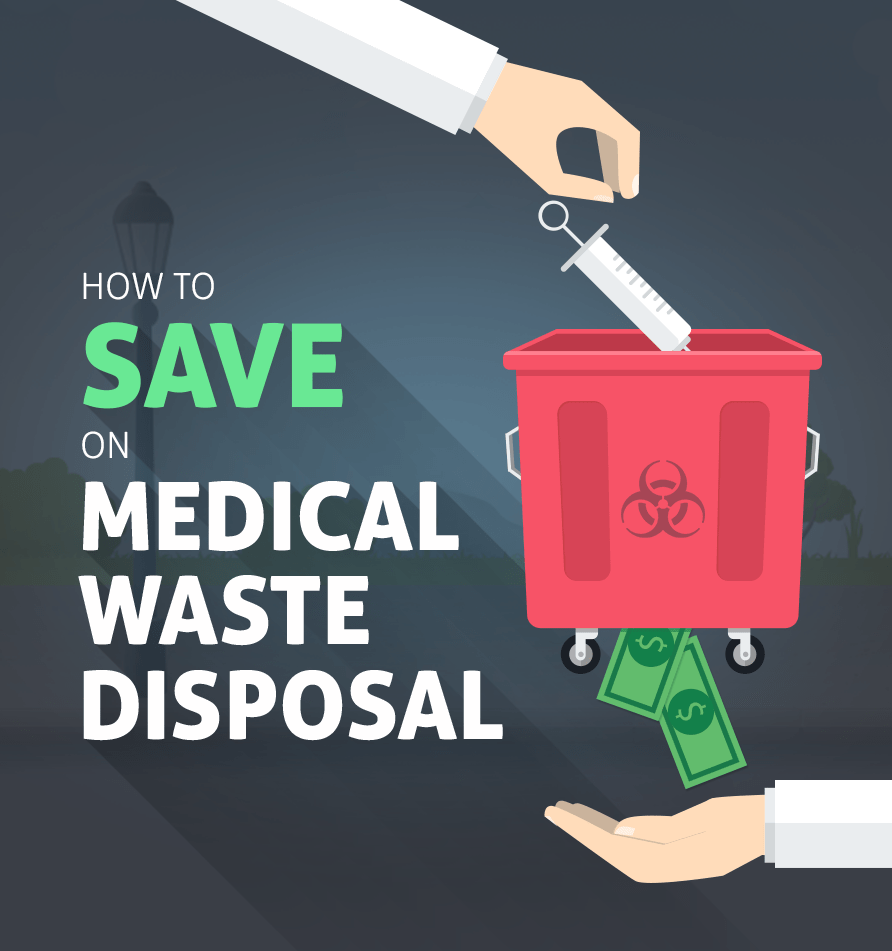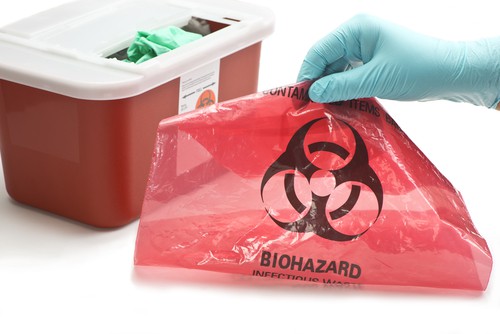Strategic Medical Waste Disposal Solutions: Supporting Safety and Sustainability
Wiki Article
Finest Practices for Medical Waste Administration
Clinical waste administration is a critical aspect of medical care facilities' procedures to ensure the safety and security of clients, staff, and the setting. Applying finest practices in medical waste administration is vital to minimize the threats connected with contaminated materials. This includes correct partition and classification of waste, ensuring its safe storage and labeling, sticking to regulative guidelines, and using reliable disposal approaches. By following these finest methods, health care centers can minimize the possibility for infections, injuries, and pollution triggered by incorrect handling and disposal of medical waste. This intro aims to give an introduction of the significance of ideal methods for clinical waste administration and the subsequent areas will explore each practice thoroughly - medical waste disposal.
Partition and Categorization
In the area of medical waste monitoring, proper partition and categorization are vital techniques for making certain the safe and reliable disposal of healthcare-related products. Clinical waste is produced from various resources, including health centers, facilities, labs, and various other healthcare centers. It consists of a vast array of products, such as needles, syringes, plasters, handwear covers, and pharmaceutical waste.Partition includes the organized splitting up of different kinds of clinical waste based on their characteristics and possible dangers. This process helps to stop cross-contamination and guarantees that each sort of waste is taken care of properly. Sharps waste, such as blades and needles, ought to be put in puncture-resistant containers to prevent injuries and the spread of transmittable diseases. Infectious waste, such as blood-soaked plasters or cultures, ought to be segregated and treated separately to reduce the risk of spreading out virus.
Categorization is the process of classifying clinical waste right into various classifications based on its potential hazards. These categories might include transmittable waste, contaminated materials, pharmaceutical waste, and general waste. By categorizing waste, medical care centers can figure out the appropriate disposal techniques and make sure compliance with neighborhood laws and guidelines.
Proper segregation and categorization of medical waste not only protect the wellness and safety of medical care employees and the public yet likewise add to the overall efficiency and performance of waste management. It minimizes the danger of crashes, minimizes ecological impacts, and promotes liable waste disposal techniques.
Appropriate Storage Space and Identifying
To make sure the reliable and safe disposal of clinical waste, health care facilities have to adhere to correct storage and labeling techniques. WasteX Medical Waste Disposal. Proper storage space and labeling play an essential function in preserving the honesty of medical waste administration systems and protecting the health and wellness of medical care employees, individuals, and the publicWhen it involves storage, it is important to have actually assigned areas particularly developed for various sorts of medical waste. These locations should be safe, well-ventilated, and outfitted with proper containers that satisfy regulatory criteria (medical waste disposal). Partition and categorization of waste must also be taken into account to avoid cross-contamination and possible risks

Regular tracking and evaluation of storage areas and containers are vital to identify any issues or violations. Staff ought to be trained on appropriate storage space and labeling practices, highlighting the relevance of compliance with regulations and protocols.
Safe Transportation and Handling
Ensuring the protected and appropriate transportation and handling of medical waste is vital for maintaining the integrity of waste management systems and guarding the health and wellness of all included. Clinical waste, that includes items contaminated with infectious products, drugs, and various other hazardous compounds, have to be transferred in a fashion that prevents leaks, spills, and prospective contamination.To accomplish safe transportation and handling, numerous ideal methods must be adhered to. It is necessary to make use of watertight and puncture-resistant containers that are particularly designed for clinical waste. These containers must be correctly sealed and identified to avoid any type of unintended exposure or mishandling. Furthermore, waste ought to be segregated based upon its nature and type to stop cross-contamination.
Throughout transportation, it is essential to guarantee that waste containers are firmly fastened and saved in a secure manner. Automobiles utilized for moving clinical waste should be furnished with suitable security features, such as spill containment systems, to decrease the danger of any spills or leaks. Chauffeurs must obtain training on proper handling and emergency situation action treatments to efficiently resolve any type of unexpected occurrences.
Moreover, the transport and handling of clinical waste should abide by all pertinent guidelines and guidelines established forth by regional, state, and government authorities. WasteX Medical Waste Disposal. medical waste disposal service. Routine examinations and audits must be performed to examine conformity and recognize any type of locations for enhancement
Conformity With Regulatory Guidelines
Preserving compliance with regulatory standards is essential for efficient clinical waste monitoring. These guidelines are placed in location to shield public health and wellness and the atmosphere by making sure that medical waste is appropriately managed, treated, and disposed of. Compliance with governing standards aids to stop the spread of transmittable conditions, reduce possible risks, and minimize the general effect of medical waste on the atmosphere.To attain conformity, health care centers need to stay educated concerning the specific regulations controling clinical waste management in their territory. These guidelines might differ from country to country, and even within various states or regions. It is necessary for healthcare centers to have a thorough understanding of these guidelines and to apply ideal strategies and protocols to make certain conformity.
One secret facet of conformity is the correct partition and labeling of various types of clinical waste. This includes separating sharps from other waste, along with categorizing waste based on its potential dangers. Medical care facilities have to additionally guarantee that medical waste is stored in proper containers which these containers are appropriately classified and sealed.
Moreover, conformity with regulative standards requires healthcare centers to develop proper training and education programs for team member associated with clinical waste management. This includes supplying training on waste segregation, handling, and disposal procedures, as well as the correct use of personal protective devices.
Routine tracking and audits are likewise vital to guarantee continuous compliance with regulative guidelines. This involves performing regular assessments of waste storage space locations, recording waste monitoring treatments, and maintaining records of garbage disposal.
Efficient Disposal Approaches
Healthcare centers have to utilize reliable disposal methods for correct monitoring of medical waste. Incorrect disposal of medical waste can posture severe health and ecological dangers. There are a number of techniques that can be used to effectively dispose of clinical waste, guaranteeing the safety and security of medical care workers, clients, and the basic public.One commonly made use of method is incineration. Incinerators can safely burn clinical waste at heats, reducing the volume and destroying any possibly unsafe virus. Incineration can be pricey and may release harmful pollutants into the air go to these guys if not appropriately controlled.
One more technique is autoclaving, which includes subjecting the waste to high-pressure steam. This procedure eliminates microorganisms, viruses, and other microbes, making the waste risk-free for disposal in regular waste streams. Autoclaving is a ecologically friendly and reliable approach, but it needs customized equipment and trained employees.
Chemical sanitation is also made use of in some instances, where liquid chemicals are related to the waste to disinfect it. This approach is much less frequently made use of due to worries about the performance of chemical sanitation and the potential for chemical residues to pollute the environment.
Along with these approaches, healthcare facilities need to additionally execute proper partition, product packaging, and labeling of clinical waste to guarantee its secure handling and disposal. Normal training and education and learning of personnel on proper waste monitoring techniques are vital to maintaining efficient disposal methods.
Conclusion
In verdict, executing finest techniques for clinical waste administration is essential for guaranteeing the safety and security of health care employees, clients, and the atmosphere. By correctly classifying and segregating waste, keeping and identifying it properly, making certain risk-free transportation and handling, following governing guidelines, and using efficient disposal approaches, medical care facilities can properly manage and minimize the threats related to clinical waste. It is crucial for healthcare organizations to prioritize and adhere to these best practices to keep a sustainable and safe healthcare environment.Clinical waste administration is an essential element of healthcare facilities' operations to make sure the safety and security of people, staff, and the atmosphere. Executing finest methods in medical waste management is essential to minimize the dangers associated with hazardous waste. These categories might include contagious waste, unsafe waste, pharmaceutical waste, and general waste.In final thought, applying best methods for medical waste monitoring is necessary for making sure the security of medical care employees, people, and the atmosphere. By properly categorizing and setting apart waste, storing and classifying it appropriately, making sure risk-free transport and handling, conforming with governing guidelines, and employing effective disposal approaches, medical care facilities can properly handle and reduce the threats connected with medical waste.
Report this wiki page